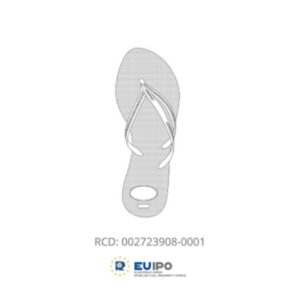
The Concept of Trademark Transfer
What is Trademark Transfer?
Trademark transfer refers to the process where the rights and ownership of a trademark are transferred from one entity to another. This can occur for various reasons, such as a business sale, merger, or licensing agreement.
Reasons for Transfer of Trademark
There are numerous reasons why a trademark transfer might occur. It could be due to a company’s strategic decision, a legal requirement, or a financial necessity.
Understanding Trademarks
What is a Trademark?
A trademark is a unique symbol, logo, word, or phrase that a company uses to distinguish its products or services from those of others. It’s a significant part of a company’s brand identity, offering a way for consumers to recognise and associate with the company.
Importance of Trademarks
Trademarks play a crucial role in the business world. They protect the company’s reputation, prevent confusion in the marketplace, and help in building brand loyalty among customers.
Types of Trademark Transfer
Assignment
An assignment is a complete transfer of rights, where the original owner relinquishes all rights and interests in the trademark to the new owner.
Licensing
Licensing, on the other hand, is a partial transfer. The original owner, or licensor, grants permission to another party, the licensee, to use the trademark under specific conditions.
The Process of Trademark Transfer
Preparing for Transfer
Before a trademark can be transferred, it’s essential to prepare thoroughly. This includes ensuring the trademark is registered and conducting a thorough valuation.
Legal Procedures
The legal procedures for a trademark transfer can be complex. It’s crucial to draft a clear and comprehensive transfer agreement and to record the transfer with the appropriate trademark office.
Potential Issues and Solutions
Common Challenges in Trademark Transfer
A transfer of trademark can present several challenges, such as disagreements over valuation, potential infringement issues, and navigating the legal procedures.
How to Overcome These Challenges
To overcome these challenges, it’s advisable to seek professional advice, conduct thorough due diligence, and ensure clear communication between all parties involved.
International Trademark Transfer: A Closer Look
Transferring a trademark internationally can be a complex process, but it’s often necessary for businesses operating in the global market. Let’s delve deeper into this topic.
International Trademark Protection
According to the World Intellectual Property Organisation (WIPO), you can protect your trademark internationally in two ways. You can either file a trademark application with the trademark office of each country where you seek protection, or you can use WIPO’s Madrid System.
The Madrid System is a convenient solution for registering a trademark in multiple territories. It allows you to benefit from one application, in one language, paid in one currency. This system simplifies the process of international trademark registration, making it easier for businesses to protect their brand globally.
The Role of WIPO in Trademark Transfer
WIPO plays a significant role in the international trademark landscape. It administers several treaties that, along with national and regional laws, make up the international legal framework for trademarks. These treaties include the Paris Convention, Madrid Agreement, Madrid Protocol, and others.
WIPO also provides resources like the Global Brand Database, which allows you to search for trademarks, appellations of origin, and official emblems. This can be particularly useful when preparing for a trademark transfer, as it allows you to conduct thorough due diligence and ensure there are no existing trademarks that could conflict with yours.
The Impact of Trademark Transfer on Brand Identity
Maintaining Brand Consistency
When a trademark is transferred, it’s crucial to maintain brand consistency. This means ensuring that the trademark continues to represent the same quality and values that customers associate with it. Any changes to the trademark or how it’s used can confuse customers and potentially harm the brand’s reputation.
Communicating the Transfer
It’s also important to communicate the trademark transfer to customers, suppliers, and other stakeholders. This can be done through various channels, such as press releases, social media updates, and direct communication. Transparency during this process can help maintain trust and prevent any misunderstandings.
The Future of Trademark Transfers
The Role of Technology
Technology is playing an increasingly important role in trademark transfers. For example, blockchain technology could potentially be used to create a transparent and secure record of trademark transfers, making the process more efficient and reliable.
The Impact of Globalisation
As businesses continue to operate on a global scale, the need for international trademark transfers is likely to increase. This will require businesses, legal professionals, and trademark offices to adapt and find ways to streamline the process while still ensuring that trademarks are adequately protected.
Conclusion
Transferring a trademark is a significant process that requires careful planning and execution. Whether you’re considering assigning or licensing your trademark, understanding the process and potential challenges can help ensure a smooth transition.
FAQs
- What is the difference between a trademark assignment and a license?
- An assignment is a complete transfer of rights, while a license is a partial transfer where the original owner still retains some rights.
- Can a trademark be transferred internationally?
- Yes, but the process can be complex and may require the assistance of legal professionals familiar with international trademark laws.
- What happens if a trademark transfer is not recorded?
- If a transfer is not recorded, it may not be legally enforceable, and the new owner may not be fully protected.
- Can a trademark be transferred to multiple parties?
- Yes, a trademark can be licensed to multiple parties, but it’s important to ensure that this doesn’t lead to market confusion.
- How long does a trademark transfer process take?
- The duration can vary depending on the complexity of the transfer, the jurisdictions involved, and the efficiency of the legal procedures.
Written by Ellis Sweetenham – Senior Intellectual Property Law Consultant
After achieving a First Class LLB Law degree from Southampton Solent University in 2016, Ellis went on to complete an LPC LLM in Legal Practice in 2017 at the University of Law. Following her training, Ellis was admitted to the role as a Solicitor in February 2019.











